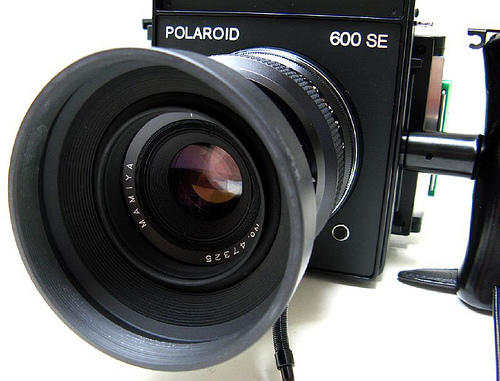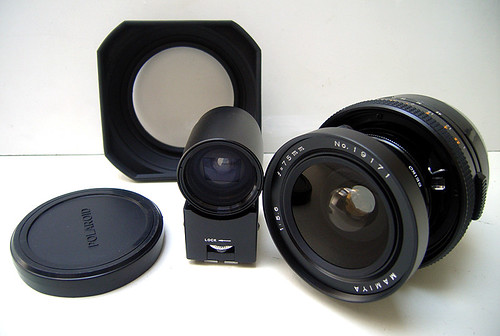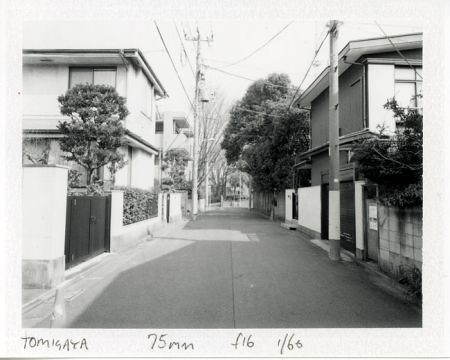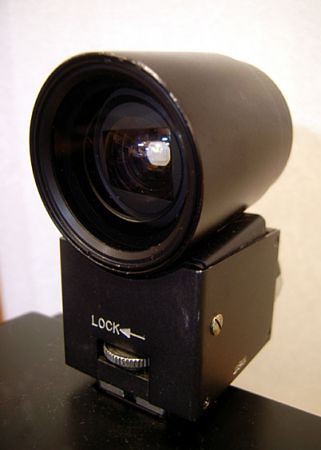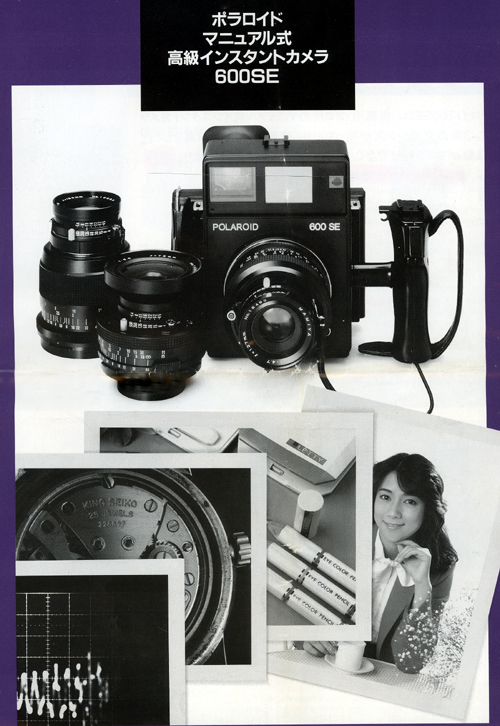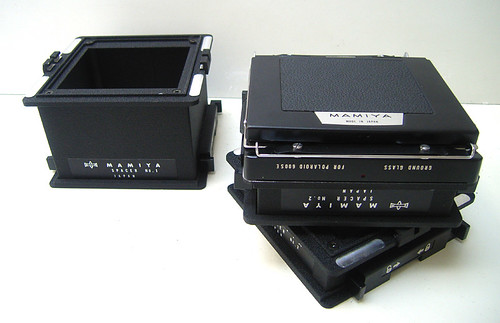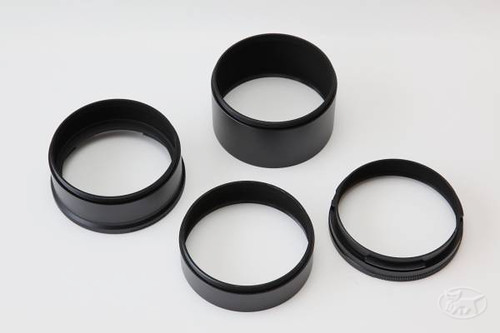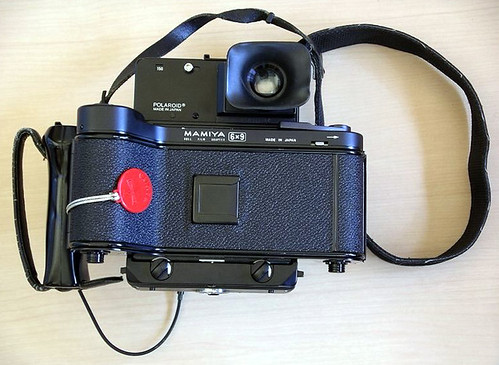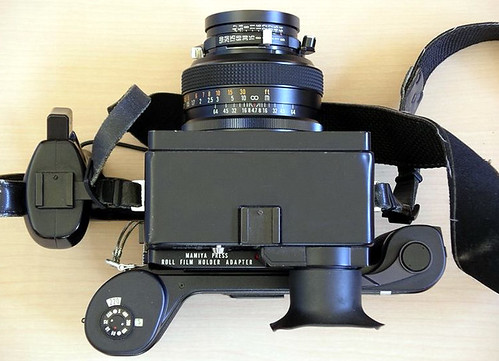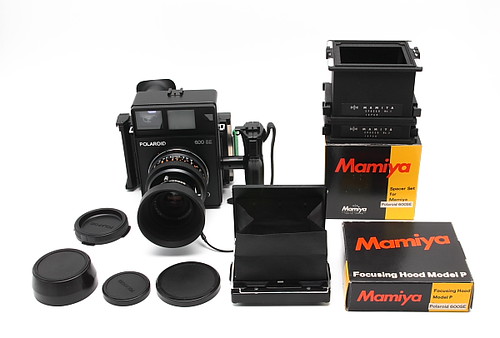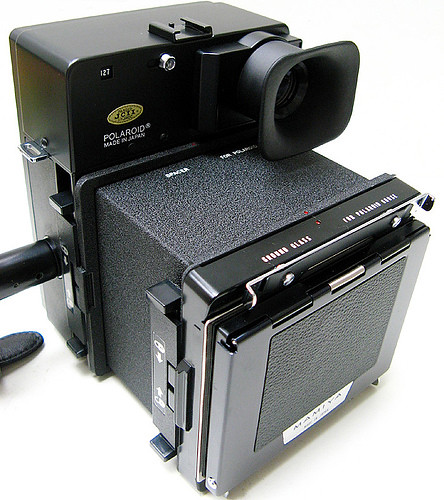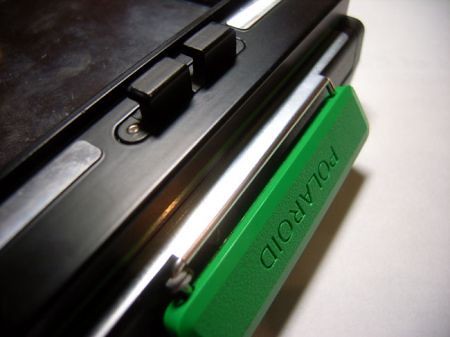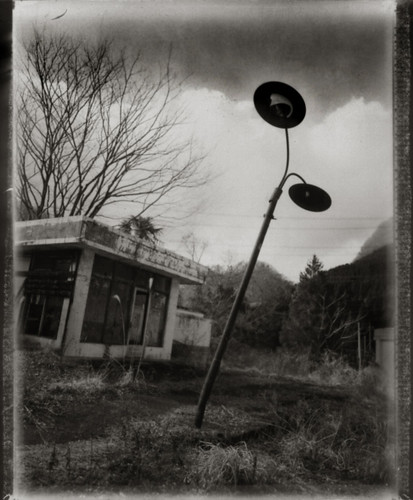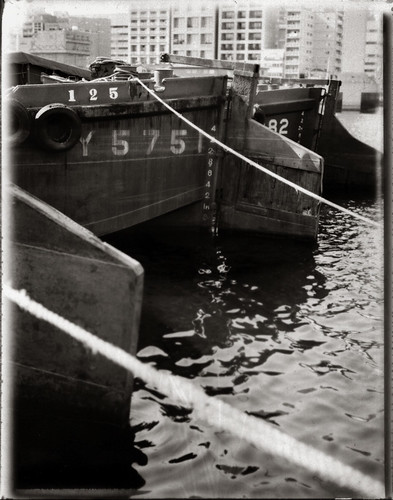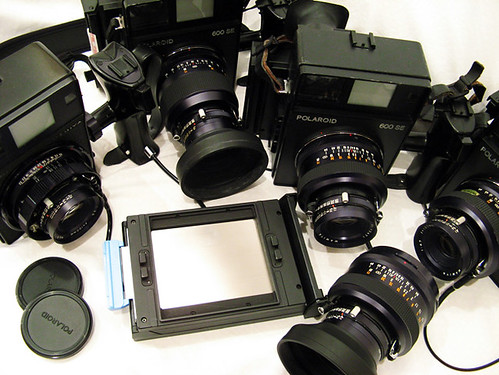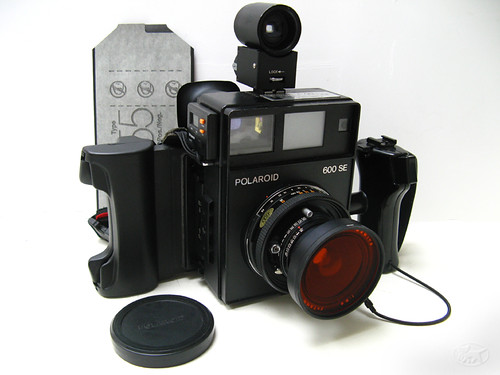 Removable back, interchangeable lenses, what more could you want from a Polaroid camera? Errr? How about a gross weight something less than the Queen Mary?
Removable back, interchangeable lenses, what more could you want from a Polaroid camera? Errr? How about a gross weight something less than the Queen Mary?
Polaroid 600 SE `Professional` – The Bus – and how to shoot ISO6 rated exposures – yurgh!
However, if you want to ditch your automatic, and want something that allows full manual control over your Polaroid photography, then the 600 SE is a viable alternative to the 180/190/195 series of manual cameras.
The 600 SE has a great bright-image, coincident rangefinder, with adjustable framelines for the native 127mm and 150mm lenses. Three lenses are available:
* 75mm f5.6 (`wide`), with auxiliary viewfinder.
* 127mm f4.7.
* 150mm f5.6 (`portrait`).
The 150mm being the least sought after, is relatively cheap, and the 75mm – probably because of the finder-combo need – the most expensive. I`ve not seen or heard of any other lenses fitting the SE body. Note the difference between the 600 SE and the plain-jane 600 is the lens interchangeability.
Lens comparison photographs follow, all shot with Fuji FP-400B (f16 at 1/60s), on nothing much more interesting than my street (or one a few streets away if you`re an Internet stalker), as I could not be bothered lugging three lenses anywhere further – did I mention everything is very heavy?
三镜头的比较
While the 75mm has half the focal length of the 150mm, it lacks the wide wideness I was after, being something just under a 30mm in a 35mm-format equivalent scale. Still, each lens has enough individuality, and one or two should make any SE shooter happy.
Mamiya `M` adapter with Mamiya Roll-Film Back. 120 only for an obvious reason, with 6×4.5, 6×6 and 6×9 capability. Slider for frame counter red windows and appropriate mask set.
As well a a few types of 4×5 sheet film backs fitting the `M` adapter, also available is a straight 120/220 6×9 roll-film back fitting the same `M` adapter:
600SE and Native Mamiya Back Spacer & Ground Glass Screen Set.
How to make a 600 SE heavier – add the macro spacer set and ground glass focus screen…
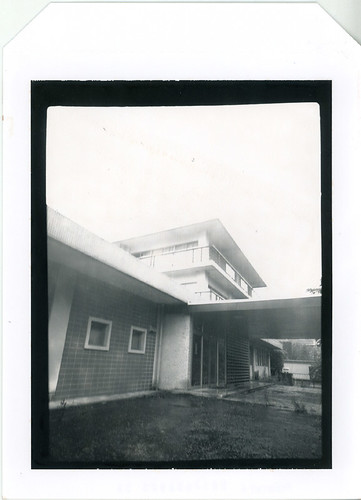 Not full-frame onto 4×5, but close.
Not full-frame onto 4×5, but close.
It does not accept square format pack film, like the 195 does, only rectangular stuff (from Fuji or Polaroid). Flash-synching of some sort is available too, but I do not use that.
It also has two tripod mounts, one for portrait and one for landscape orientation. This is needed, as tilting your tripod head horizontal with the SE sitting sideways, is a sure way to break even Manfrotto carbon legs – the SE is that heavy.
No metering is provided. If you`re going to carry one around, make sure you`ve got one of those nice fat foam carry straps, as the SE can sometimes feel quite heavy.
Thick frame lines contribute to weight.
Problems? Did I mention it weighs a lot?
Changing backs in the field is an OK process, but with my set being the later model (with the external plastic catch), not the early (internal wire catch), the catch can get caught on bag/pants/zippers on the way to the camera, and this results in – invariably- a full pack of film being scattered across the floor of someone`s bedroom.
A lost neko lay down on the tatami to die in the cold alone. Type-665. (75mm).
The back locks can be a little stiff sometimes, and are certainly not as smooth as the Mamiya Universal on which the 600 SE is based. They do however lack the locking function – which I`ve never found as a problem. A light lube fixes sticky back locks in a flash.
The 600 SE back mount is not unique, and can also be found on other removable back cameras such as the Mini Portrait, and the Studio Express (4-lens) – both a useful source of spare backs as these passport photograph cameras are considered junk by many. The mount is similar to the Mamiya Universal, but the backs are not interchangeable.
Be careful if you are buying a Mini Portrait or Studio Express for spare backs though, as some early Mini Portraits have Graflock backs, as do some two-lensed Studio Express.
Lens interchangeability is a snap, with the bayonet lock & mount smooth and accurate. Rethreading the pistol grip`s shutter release cable can be fiddly, especially with a lens hoods mounted. As I quite like a bit of flare, and because of this, I`ve ditched my hoods.
Forgetting to remove the dark slide is of course an issue for those not used to this function as part of your shooting routine. `Remove-before-flight` hanging tags eliminated this issue for me.
The 600 SE was also a well configured system for scientific and instrument purposes. As well as the macro spacer set, two types of oscilloscope hoods, and macro lens-loupes were also available. Note use of trigger-grip flange to secure un-used shutter release cable while remote release used. This is necessary too when shooting long exposures to ensure use of trigger-grip does not shake camera, and un-used release cable does not float around in front of the lens.
From the scientific accessory catalog – the macro-focusing stand, spacer, and ground-glass focusing screen combo.
Oscilloscope hood in use with 75mm wide. It attaches with a simple filter-like screw-in plastic flange to lens filter thread.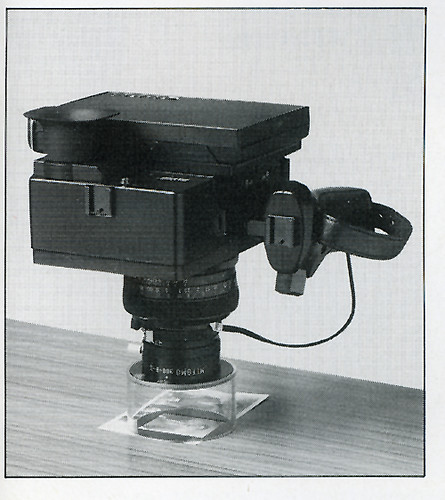
Diopter on 127mm, and light spacer for fixed distance exposures.
Summary: a very versatile system, sure to build muscles in any street photographer, and probably more suited to a studio as a proofing camera. A great built-to-last tool, and one I probably use more than any other of my Polaroids because of its purposeful modular versatility. Of all the components I’ve run through in exploring the 600 SE system, the main elements that I use most are:
o 75mm and 150mm lenses (ditched the 127mm).
o Three-stop orange filter for some neat sky effects.
o Stand-alone light-meter.
If you are lucky, studio sets can be picked up for relatively cheap. This set of three (excluding the Universal) were sold on as one lot from a studio in Nagoya. The Universal is of course an alternative to the 600 SE, but most will be a few years older still than the oldest 600 SE.
More results can be seen CLICK HERE. Arigato.
全文来自伟大的filmwasters,原帖这里
